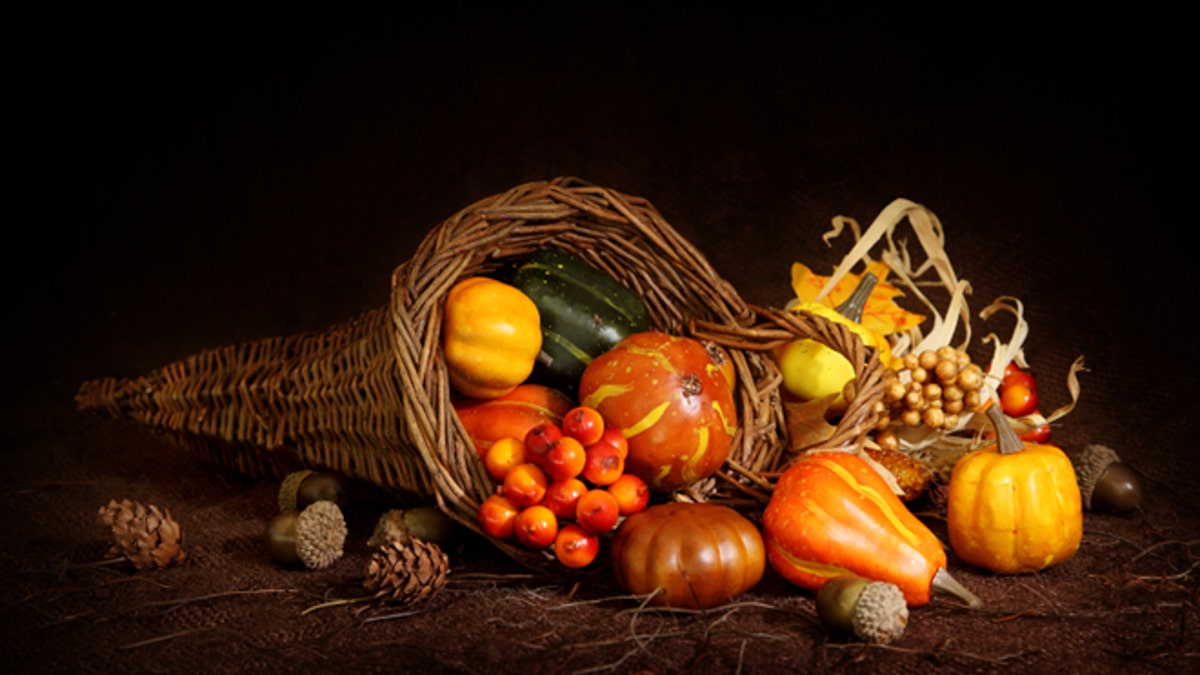
(iStock)
This Thanksgiving, why not go old school? No, we’re not talking about ‘50s-era cranberry Jell-o molds or spinning vinyl records during dinner – we’re talking about going way back. Think 1621.
The very first Thanksgiving happened in the post-harvest autumn of that very year, when Governor William Bradford proclaimed that a feast should be held, during which the exhausted settlers would break bread with Wampanoag American Indians. The original colonists were seemingly a brave lot. Not only did they set off on a long journey for lands unknown without a GPS, but once they got there they needed to learn to fend for themselves and figure out foodstuffs (and how to grow, pick, and cook them) that were utterly unfamiliar. All without the help of a trusty App or a quick Google search. Imagine?
"There are lots of [native] foods that are available, and many of them aren’t so esoteric," offers James Beard Award-winning chef Fernando Divina of the native foods-focused Terrace Kitchen Restaurant in Lake Oswego, Ore.
So as you’re starting to think menu options for this Thanksgiving, consider including the following ingredients for a truly pilgrim-pitched holiday meal:
--Oysters, Cod, Striped Bass, and Eel. Talk about bounty - the cold New England waters were plentiful with shell-enclosed and swimmy creatures, just ripe for the fishing. Oyster stuffing is still a popular Thanksgiving staple for many celebrators, but why not add a side (or main, for your non-meat-eating guests, if you have any) of creamy, baked cod or bass, or a pre-dinner starter of smoked eel with goat cheese on toast. In New York, Esca’s fish-whisperer chef Dave Pasternack makes an autumnal, perfect-for-the-season pan-seared striped bass with roasted sweet potatoes (see recipe below), that might even lure your turkey lovers.
--Wild fowl. Wild turkeys may well have been on the settler’s menu, and many of the heritage-breed options out there will get you close. But you also might consider roasting up goose or duck, as well. Note: The latter fowl more often than not need to be pre-ordered, so check with your local butcher or meat section of your supermarket to see if they’re taking orders. If you have no luck locally, check out D’Artagnan who carry free-range geese and whole Muscovy duck for roasting (as well as great, high-quality venison sausage – see below), and they ship anywhere in country.
--Venison. Oh, deer - they were there and still are here. Venison may well have a funky, gamey-tasting reputation, but when done right can be wildly delicious. A good way to include it in the meal? Stuffing made with venison sausage. Yum!
--Onions and Leeks. Chances are, you’re already including these staples somewhere in your Thanksgiving meal. From stuffing to soups to casseroles to salads, get to choppin’ these autumnal veggies into myriad dishes. Beware, though – leeks are dirty little things. Make sure you slice them on the vertical and rinse, making sure to separate each layer to get the grit out.
--Corn. The corn we know today isn’t what the Wampanoag’s had available. Nearly four hundred years ago, they were roasting something called flint corn. If you can’t find it at your local greenmarket, you can buy it in ground form from producers like Gray’s Grist Mill in Westport, Mass. for use in stews and soups, as creamy polenta, or in bread (which no Thanksgiving table should be without).
--Pumpkin. Apple-shmapple – back in the pilgrim days, apples for pie or munching weren’t around. Pumpkin, however, was. Sticking with your usual pumpkin pie is a great way to nod at settler tradition, but you might also consider dicing and roasting some. Cut them into 1 ½ inch chunks, toss with rosemary, kosher salt, and olive oil, roast in a 350 degree oven for about 30 minutes or until fork-tender.
--Watercress. Apparently it was on the table at that very first Thanksgiving, and it may well be one of the easiest side-dish ingredients you can use. Simply wash it and chop it for a great salad base. If you have some extra pecans from a holiday pie recipe laying around, toast them in a cast-iron pan on a medium-low flame and toss them atop the crunchy green, along with some crumbled blue cheese, salt and pepper, and good olive oil.
